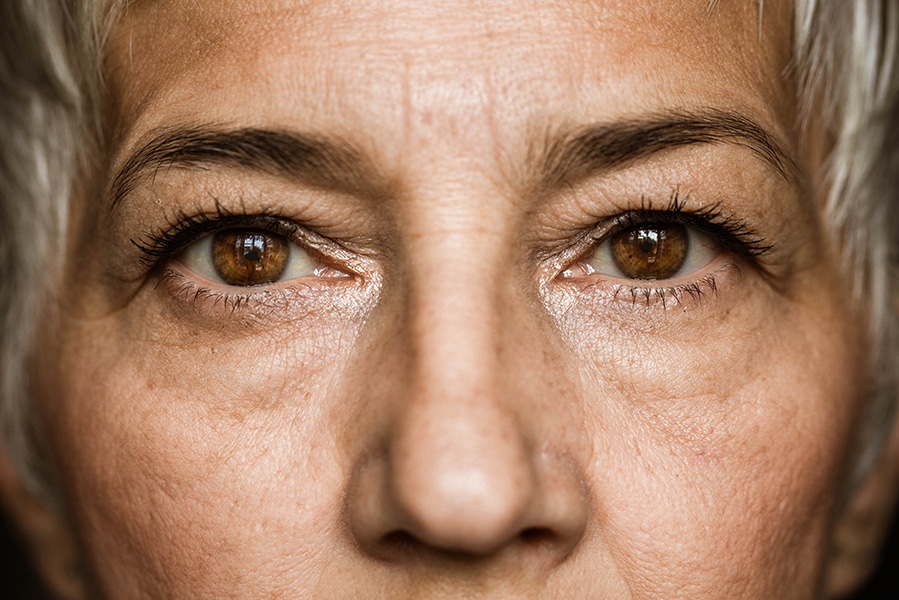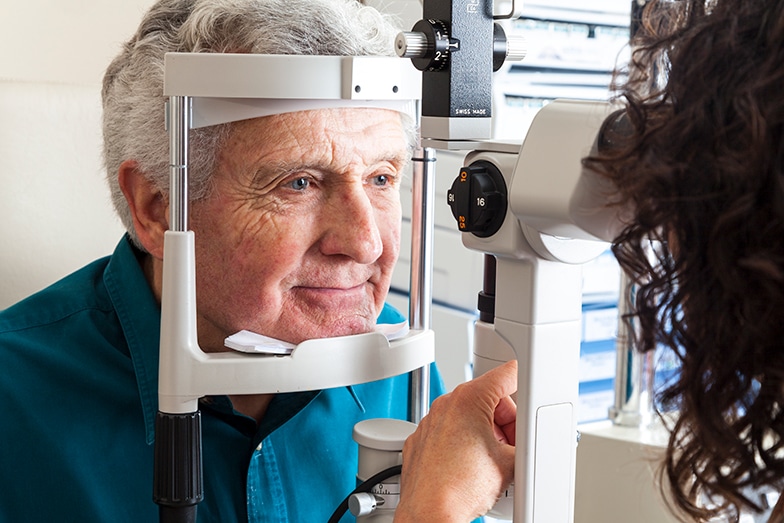For Patients &
Caregivers
5
Things to Know about Wet AMD
- Wet AMD is a progressive disease that affects the macula, the region of the retina at the back of the eye responsible for central vision.
- Wet AMD is a leading cause of blindness in patients over 65 years of age, with a prevalence of approximately 20 million individuals worldwide living with this condition.i
- The incidence of new cases of wet AMD is expected to grow significantly worldwide as populations age.i,ii
- AMD is expected to impact 288 million people worldwide by 2040, with wet AMD accounting for approximately 10% of those cases.ii
5
Reasons a New Therapy is Needed for Vision-Threatening Eye Diseases like Wet AMD
- Although the current standard of care – ocular injections of anti-VEGF agents to inhibit the growth of blood vessels and prevent fluid leakage – is effective in the short-term, it requires visits to the doctor every 4 to 12 weeks for more injections.
- Complying with this regimen can be difficult for patients and their caregivers – patients have reported that average therapy visits can require as much as 12 hours of their time.iii
- As a result, many patients skip or discontinue scheduled treatments, which leads to underdosing that can cause loss of vision.
- Retina specialists report that decreasing the frequency of injections is by far the largest unmet need for wet AMD patients.iv
- Studies of anti-VEGF treatments suggest that gains in visual acuity were largely lost in two-thirds of patients who were followed for more than 7 years.v
Resources

Wet Age-related Macular Degeneration
Our Commitment
Adverum is committed to developing lifelong, regenerative therapies that may preserve patient sight and help wet AMD patients improve their quality of life. To learn more about our active clinical trials, visit our Pipeline page or contact us.

i Bright Focus Foundation. Age-Related Macular Degeneration: Facts & Figures. [Internet; cited October 2021]. Available from https://www.brightfocus.org/macular/article/age-related-macular-facts-figures.
ii Wong WL, et al. Global prevalence of age-related macular degeneration and disease burden projection for 2020 and 2040: a systematic review and meta-analysis. Lancet Glob Health. 2014;2:106–16.
iii American Macular Degeneration Foundation (AMDF) Website. Accessed on 18 December 2020 at https://www.macular.org/what-macular-degeneration.
iv Scott AW, Bressler MN, Ffolkes S, Wittenborn JS, Jorkasky J. Public attitudes about eye and vision health. JAMA Ophthalmology. 2016;132(10):1111-1118.
v ADVM third-party market research.




